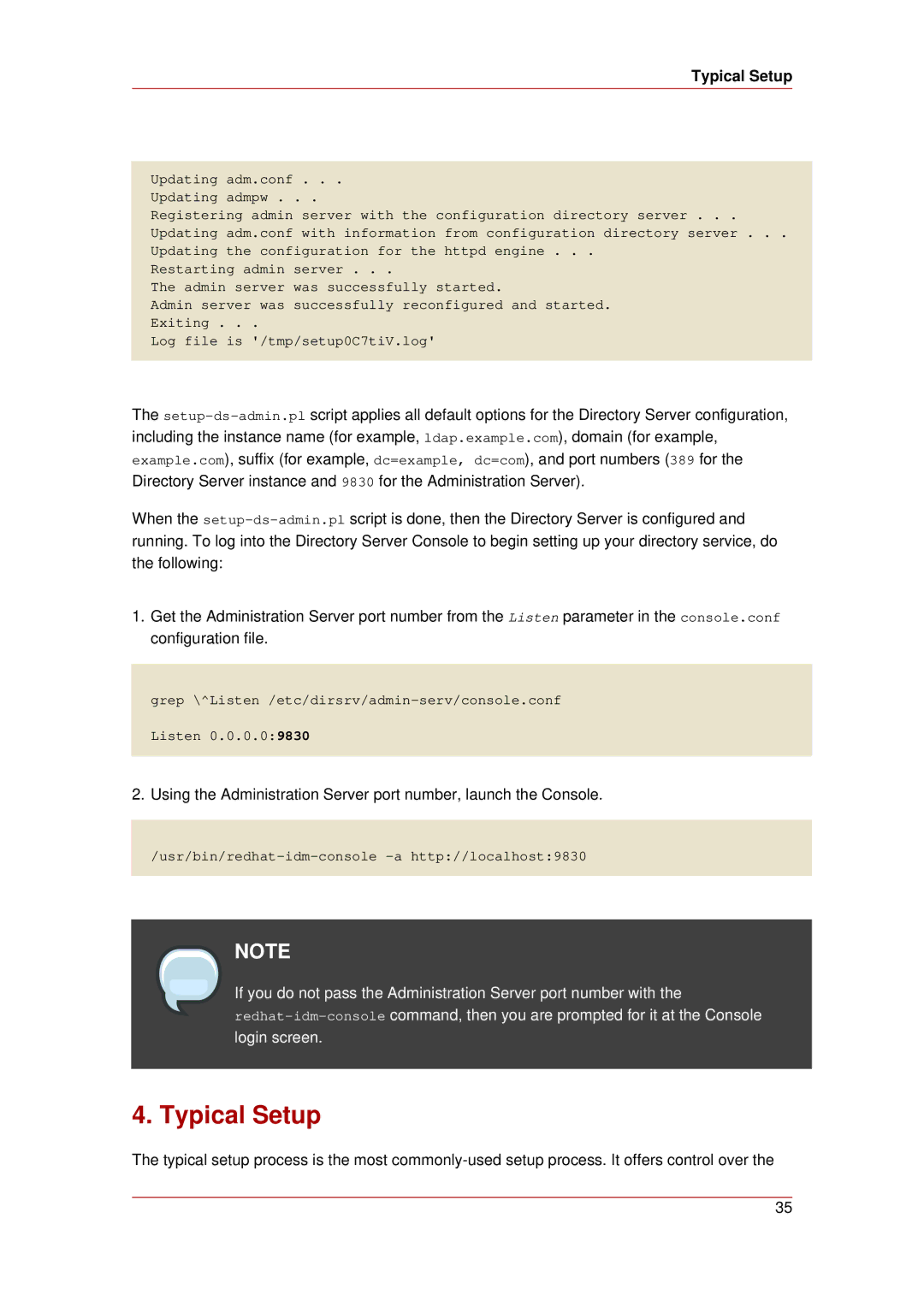
Typical Setup
Updating adm.conf . . .
Updating admpw . . .
Registering admin server with the configuration directory server . . .
Updating adm.conf with information from configuration directory server . . .
Updating the configuration for the httpd engine . . .
Restarting admin server . . .
The admin server was successfully started.
Admin server was successfully reconfigured and started.
Exiting . . .
Log file is '/tmp/setup0C7tiV.log'
The
When the
1.Get the Administration Server port number from the Listen parameter in the console.conf configuration file.
grep
Listen 0.0.0.0:9830
2.Using the Administration Server port number, launch the Console.
NOTE
If you do not pass the Administration Server port number with the
4. Typical Setup
The typical setup process is the most
35
